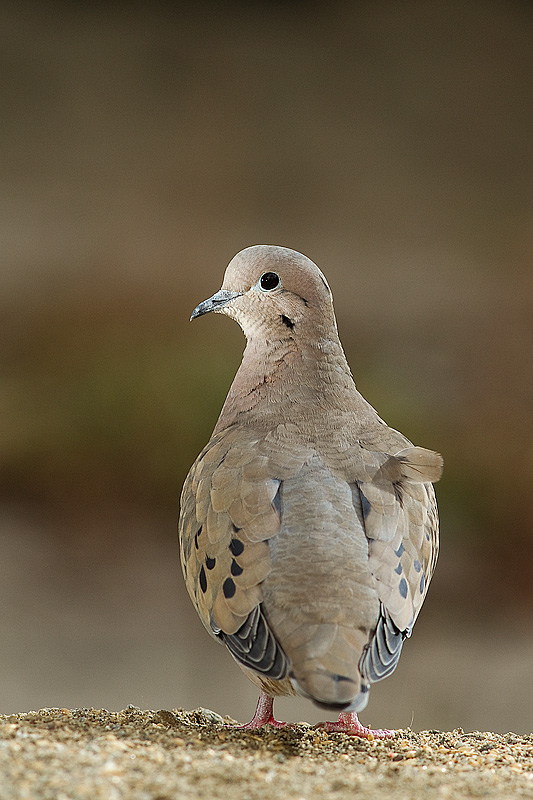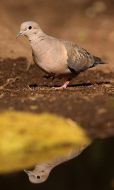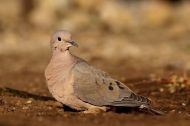Eared-Dove
Torcaza
Zenaida auriculata
Length: 267mm. Sexes slightly unlike. Bill black with ash tinted nares; iris dark brown; head ashy grey with small dark blue dots above and below the auricular area; chin whitish; hind neck ashy greyish brown; both sides of base of neck bronzed with bright golden and purplish gloss; foreneck, breast, flanks and upper abdomen pink grey; lower abdomen and undertail coverts buffy cream. Back and scapulars greyish brown; uppertail coverts greyish brown; rectrices ash grey with subterminal blackish grey band, the outermost on either side show outer vexillum and tip creamy white, same colour on the outermost feather until the fourth feather. Lesser, median and tertiary wing coverts greyish brown; greater wing coverts ash grey, tertiaries and some median proximal coverts show black oval spots; remiges brownish grey; underwing coverts and axillaries pale ash grey. Legs red.
Females are very similar to males but with browner tones and the bright spots on either side of the base of the neck are duller. Juvenile: even browner than females with whitish spots on the breast, crown, upper back and wing coverts. Legs are orange.
The Eared-Dove is readily identified by its medium size and colour. Habitat and behaviour: a very abundant species, it frequents all types of habitat. It is found in pairs and flocks, sometimes in very large numbers, in scrublands, woods with native and introduced trees and adjacent areas, open and cultivated fields. It can also be found in mountains and rainforests and it is very common in orchards, gardens, parks and urban areas.
It nests in woods and forested areas in single pairs or in colonies made up of large number of pairs. At the breeding grounds a remarkable whispering sound resulting from their cooing may be heard. The nest is placed halfway or low in the tree, also directly on the ground, two white eggs being laid. Very sensitive to human disturbance, it will often desert the nest if anyone touches it during the laying period.
The Eared-Dove feeds mainly on seeds and grain, assembling in stubble fields of cultivated land. Range: widely distributed, it is found all over South America; in Argentina there are two races: Zenaida auriculata chrysauchenia, in the north of the country to Río Negro on the south, and La Rioja on the west, and Zenaida auriculata auriculata from La Rioja and Río Negro to Tierra del Fuego and sporadically at Islas Malvinas and Isla de los Estados.
Illustrated Handbook of the Birds of Patagonia
Kindless: Kovacs Family
|











